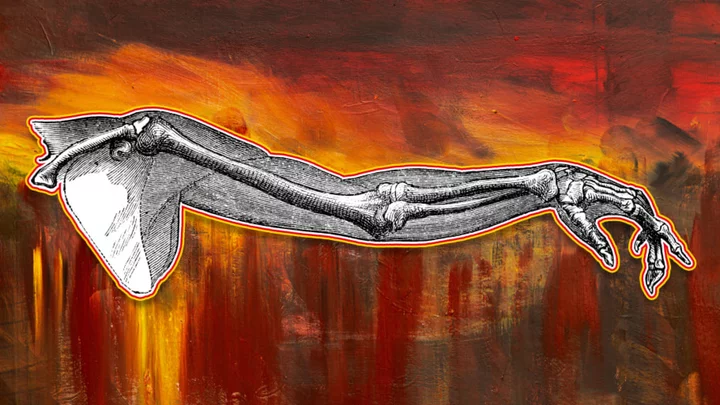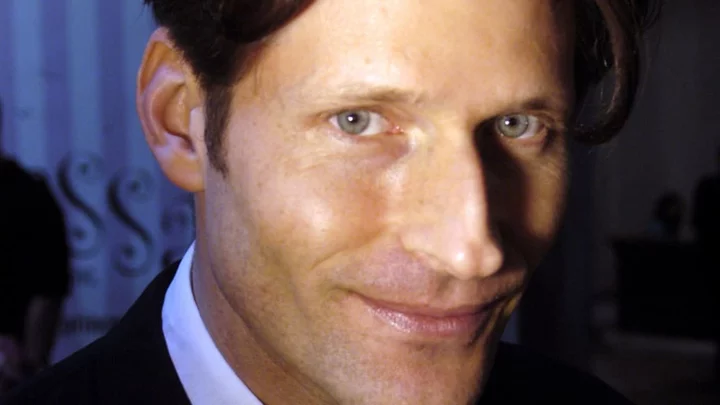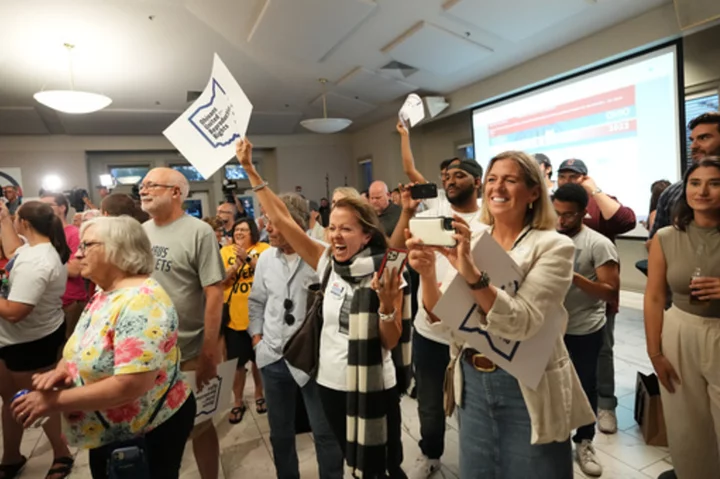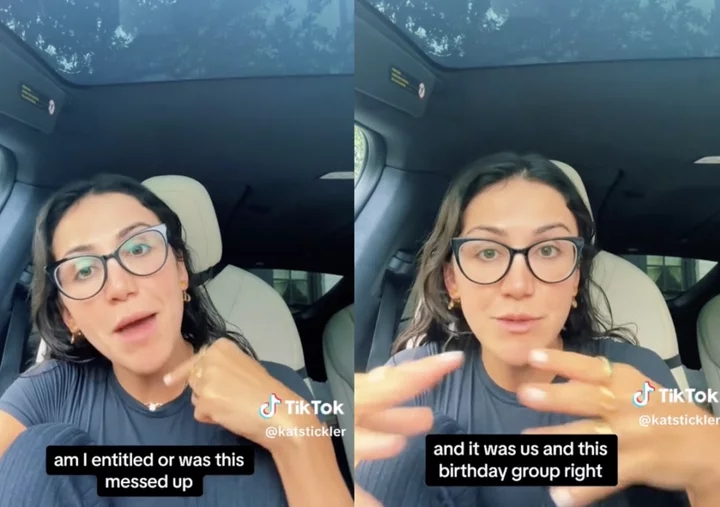Sarah Jay had every right to be nervous.
It was an April afternoon in 1788, and Sarah was at home with her husband, American statesman John Jay—who had recently helped James Madison and Alexander Hamilton write The Federalist Papers—in New York City when their family friend, General Matthew Clarkson, suddenly barged inside unannounced, begging the Jays for a sword.
John sprang into action. “[He] ran up the stairs and handing General Clarkson one sword, to my great concern armed himself with another,” Sarah later recalled.
Swords at the ready, the two men hurried to the local jail, where they would attempt to quell a massive, angry mob.
Though the details are murky, it appeared that the trouble had started when locals hanging around New York Hospital on Broadway in Lower Manhattan caught sight of a disembodied human limb. According to one contemporary report, they “discovered a something [sic] hanging up at one of the windows, which excited their curiosity, and making use of a stick to satisfy that curiosity, part of a mans [sic] arm or leg tumbled out upon them.” Other versions of the story claim it was a woman’s arm, and that a surgeon at the hospital waved it around to get rid of some children who were looking in on him. Still other stories claimed that the arm belonged to one of the children’s mothers whose body was later found to have been pulled from its grave.
In any case, things went downhill from there. A deafening moral outcry engulfed the city, with working-class citizens demanding to know where, exactly, this mysterious arm (or leg) had come from. To express their displeasure, they took up arms of a different sort, like picks, shovels, and other makeshift weapons.
Many folks assumed the worst: that someone at the college had stolen the limb from a graveyard. And as far as anyone knows, that’s just what happened. The melee that ensued became known as the Doctor’s Riot of 1788, and it wasn’t the first time something like it had occurred—or the last.
Graverobbing For Knowledge and Profit
Violent standoffs like the one that took place in New York in 1788 have become known as “anatomy riots” or “resurrection riots.” From the 1760s through the 1860s, “there were no legal means to supply the growing number of bodies demanded by the rapid proliferation of medical schools,” historian Martin S. Pernick wrote in a 2003 issue of the Journal of the History of Medicine and Allied Sciences. “Thus, medical education required robbing graves, a practice that provoked riots when discovered.”
It was a problem on both sides of the Atlantic. Before the 1830s, if you were a British physician or medical student hoping to hone your dissection skills and increase your knowledge of the human body, the only legal way to get a cadaver was at the gallows. But the hangmen didn’t have enough corpses to go around, so body snatchers rushed in to meet the demand, raiding cemeteries for doctors and med schools. Sometimes, resurrectionists actually murdered people and sold their bodies for dissection (see the crimes of William Burke and William Hare).
Unfortunately, in the U.S., graveyards where Black people were buried were the most popular targets. In Body Snatching: The Robbing of Graves for the Education of Physicians in Early Nineteenth Century America, Suzanne M. Schultz writes that before the Civil War, Southern doctors tended to “use the bodies of [Black people] rather than [white people] for anatomical study and dissection,” having their Black janitors to do the grave robbing for them; according to Schultz, “The Black population was aware of the grave robbing and cadaver business but was powerless to do anything about it.”
Northern doctors were no better. In 1788, Black New Yorkers petitioned their city council to crack down on medical students from Columbia College (now known as Columbia University) who had been disturbing graves at the Negroes Burial Ground.
It’s not that the petitioners were anti-dissection; on the contrary, they acknowledged the “necessity of physicians and surgeons consulting dead subjects for the benefit of mankind.” All they wanted was a humane alternative to the status quo. According to their complaint, any doctor could slink into graveyards “in the cover of night” and then “dig up the bodies of the deceased friends and relatives of your petitioners, carry them away and without respect to age or sex, mangle their flesh out of a wanton curiosity and then expose it to Beasts and Birds.”
Nothing came from their petition—but the controversy was far from over.
Chaos in New York
Jay and Clarkson got involved in the Doctor’s Riot of 1788 when it was already well underway.
Not long after the severed arm had been spotted, a furious mob of people who suspected grave robbery attacked New York Hospital. Once inside, the rioters smashed equipment and destroyed valuable specimens—as well as body parts meant for dissection.
They also captured a few people—sources vary on whether they were students, doctors, or both—who had chosen to face the mob instead of running away. Mayor James Duane was able to persuade the rioters to release the prisoners, after which he placed them in jail to keep them safe from the mob.
The unrest was far from over. The next day, protestors also descended on Columbia’s medical school (the only institution of its kind in New York City at the time) to search for ill-gotten corpses. When that didn’t satisfy their anger, some marched back to the jail to threaten the imprisoned doctors and students, while others attacked the homes of local physicians, ransacking them. Sources put the size of the mob anywhere from 2000 to 5000 people.
Governor George Clinton called in the militia. Some of New York’s political elites, like Clarkson and Jay, tried to calm the incensed crowd—but instead, the violence only escalated. The rioters began to throw rocks, one of which hit Jay square in the head. “Sarah was appalled to see her husband returning ‘with two large holes in his forehead’ and feared that some permanent damage might have been done,” biographer Walter Stahr writes in John Jay: Founding Father.
Finally pushed to the brink, the militiamen took aim and fired on the crowd, resulting in the deaths of anywhere from three to 20 people. According to the John Jay Homestead, in the days that followed the riot, “Citizens formed an armed group known as ‘Dead Guard Men’ to protect the cemeteries, and the militia patrolled the streets.”
Battles Over Bodies
The Doctor’s Riot of 1788 was not an isolated occurrence; according to medical historian Michael Sappol, there were at least 17 American anatomy riots between the years of 1785 and 1855.
The first occurred in Philadelphia in 1765; another incident took place in New Haven, Connecticut, in 1824, after a local girl’s body temporarily went missing and soon turned up at the Yale medical school. Similar riots broke out at colleges from Baltimore, Maryland, to Cleveland, Ohio.
In New York, “An Act to Prevent the Odious Practice of Digging Up and Removing for the Purpose of Dissection, Dead Bodies Interred in Cemeteries or Burial Places” was passed in 1789 (though it didn’t do much to quell graverobbing). As former Mental Floss editor Bess Lovejoy explains on the National Museum of Civil War Medicine website, “Anatomy Acts” passed beginning in 1831 made it easier for medical students to access “unclaimed bodies” from places like hospitals and poorhouses. The laws not only “helped reassure ‘respectable’ people that their graves wouldn’t be plundered,” Lovejoy writes, but “gave doctors and medical students the material they needed, and unburdened the profession from its association with criminality.”
John Jay ultimately recovered from his head wound after getting some much-needed bedrest. He would go on to become the first Chief Justice of the U.S. Supreme Court. And like Jay, the Doctor’s Riot he tried to stop would go down in history.
This article was originally published on www.mentalfloss.com as The Anatomy Riots: When Americans Protested Grave Robbing by Taking to the Streets.









